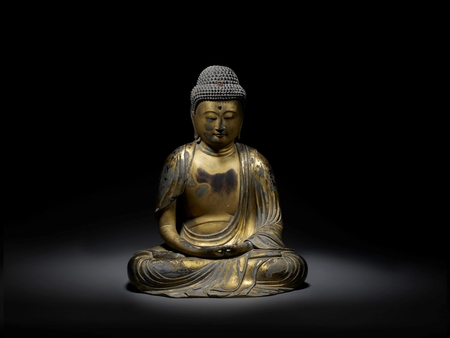Product Description
6769 A gilt-wood figure of a seated Amida Nyorai (Amitābha). The head has gyokugan (inlaid crystal eyes) and is also adorned with crystals representing the byakugō (white spiralling hair) on the forehead and the nikkei-shu (red jewel on the protrusion on top of the Buddha’s head). The hands are in Amida jō-in (the concentration mudra), which is a variation of zen jō-in, a hand position used in Zen Buddhist meditation. The mudra of concentration appears in statues created to represent the main deity, in front of which one performs kenshō nenbutsu, a meditation exercise to visualize the true form of Amida in one’s mind.
Japan 16th century Momoyama period
Dimensions: H. 35cm x W. 27.5cm x D. 22cm (14″ x 11″ x 8¾”)
Belief in Amida as Lord of the Western Paradise rose in popularity during the late 10th century. Based primarily on the concept of salvation through faith, it was not only a religion which appealed to a broad range of people, but also a direct assertion of piety against the dogmatic and esoteric ritual of the more traditional Tendai and Shingon sects. In Amida’s Western Paradise the faithful are reborn, to progress through various stages of increasing awareness until finally achieving complete enlightenment.









